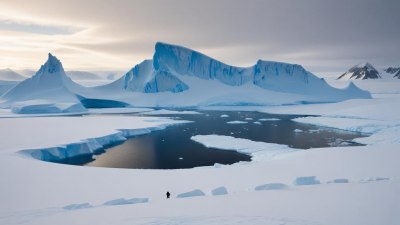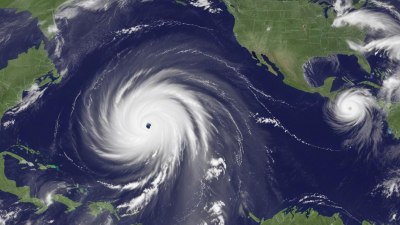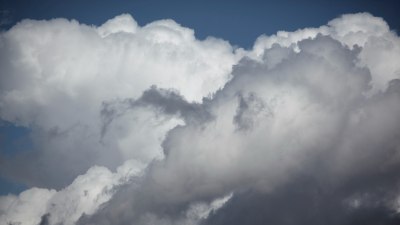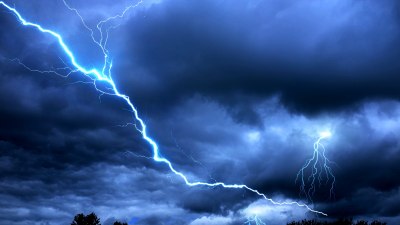Why Antarctica Is Just Earth’s Ultimate 'Do Not Disturb' Zone
Explore the unique features of Antarctica, our planet's untouched wilderness, and why it remains a 'Do Not Disturb' area.

This image was created with the assistance of Freepik
Antarctica, the southernmost continent, renowned for its icy expanse and breathtaking landscapes, has long captivated the imagination of explorers, scientists, and environmentalists alike. Its remoteness and extreme climate create an environment that is both harsh and beautiful, establishing it as Earth’s ultimate ‘Do Not Disturb’ zone. The continent is sparsely populated, primarily inhabited by research scientists, and is largely unspoiled by human activity. In this article, we delve into the reasons why Antarctica stands apart from the rest of the world and examine the importance of conserving its unique ecosystem.
The Geographic and Climatic Isolation of Antarctica
Situated at the bottom of the world, Antarctica is surrounded by the Southern Ocean, forming a physical barrier that separates it from more temperate regions. This isolation has significant climatic implications, leading to extreme weather conditions characterized by frigid temperatures and fierce winds. The Antarctic environment can be inhospitable, with temperatures plunging as low as minus 80 degrees Fahrenheit in winter. Its weather patterns are severe, and the continuous ice cover and snow contribute to its global significance, influencing weather systems across the planet.
A Biodiversity Unlike Any Other
Despite its harsh conditions, Antarctica is home to a unique array of species that have adapted to thrive in extreme environments. The marine life surrounding Antarctica, including penguins, seals, and various krill species, showcases nature's resilience. The continent's ecosystem is largely dependent on the Southern Ocean, which supports a diverse range of marine organisms. Some of the most iconic species, like the Emperor penguin, have developed remarkable adaptations to survive the cold, relying on complex social structures and breeding strategies to endure the long winters.
The Role of Ice in Global Climate Regulation
Antarctica plays a crucial role in regulating the earth's climate. The massive ice sheets, which contain around 60% of the world’s freshwater, are essential in maintaining global sea levels. Melting ice due to climate change poses a significant threat, potentially leading to catastrophic flooding across coastal regions worldwide. Furthermore, Antarctica functions as a heat sink, reflecting solar radiation back into space and influencing weather patterns globally. Protecting this frozen expanse is vital to sustaining our planet’s environmental balance.
Historical Significance of the Antarctic Treaty
In 1961, the Antarctic Treaty was established to promote peaceful cooperation in scientific investigations and to prevent military activity on the continent. This landmark agreement has been instrumental in preserving Antarctica as a ‘do not disturb’ zone. It has fostered international collaboration among scientists and has ensured that the unique environment remains untouched by commercial exploitation. Under the treaty, any activities, including resource extraction or tourism, are regulated to minimize ecological impact, affirming the global commitment to environmental stewardship.
The Challenges of Climate Change
Despite its protective status under the Antarctic Treaty, the continent faces significant threats due to climate change. Rising global temperatures have initiated the melting of glaciers at an alarming rate, resulting in ice shelf collapses and increased sea levels. This phenomenon not only endangers wildlife habitats but also disrupts global climate patterns. This urgency necessitates a united global front to curb emissions, limit global warming, and protect vulnerable ecosystems before it becomes too late.
Research and Conservation Efforts
Scientific research in Antarctica continues to yield critical understanding of climate change, oceanography, and glaciology. International research stations facilitate collaborative study, allowing scientists to monitor environmental changes and develop strategies for conservation. Ongoing efforts aim to protect native species, maintain biodiversity, and mitigate the impacts of external pressures on the Antarctic ecosystem. Alarming changes call for constant vigilance and adaptation of conservation strategies to preserve this unique environment for future generations.
The Importance of Awareness and Education
Heightened global awareness and education about Antarctica’s fragile environment are vital components in fostering responsible stewardship. Inspiring the next generation to care for this pristine wilderness can lead to informed advocacy for policies that prioritize environmental conservation. By raising awareness through educational initiatives and outreach programs, individuals around the globe can contribute to the protection of Antarctica, solidifying its status as a revered and untouched sanctuary.
Future Prospects: Sustainability and Preservation
The future of Antarctica relies heavily on sustainable practices and preservation efforts. The continent’s unique status necessitates careful attention from international communities regarding scientific research, tourism, and environmental policies. Encouraging sustainable tourism practices can allow visitors to appreciate the continent's beauty while minimizing ecological impact. Likewise, stricter regulations on fishing and other industries must be employed to prevent overexploitation of the region’s resources.
A Call to Action
Antarctica is a symbol of Earth’s most formidable and untouched wilderness. It serves as a reminder of the imperative to maintain the integrity of our planet’s ecosystems. As we confront the challenges posed by climate change, the need to protect this fragile environment is more critical than ever. Together, through global cooperation, awareness, and sustainable practices, we can ensure that Antarctica remains a ‘do not disturb’ zone for generations to come, safeguarding its unique biodiversity and letting it thrive in a world that sometimes exhibits relentless encroachment on nature.











